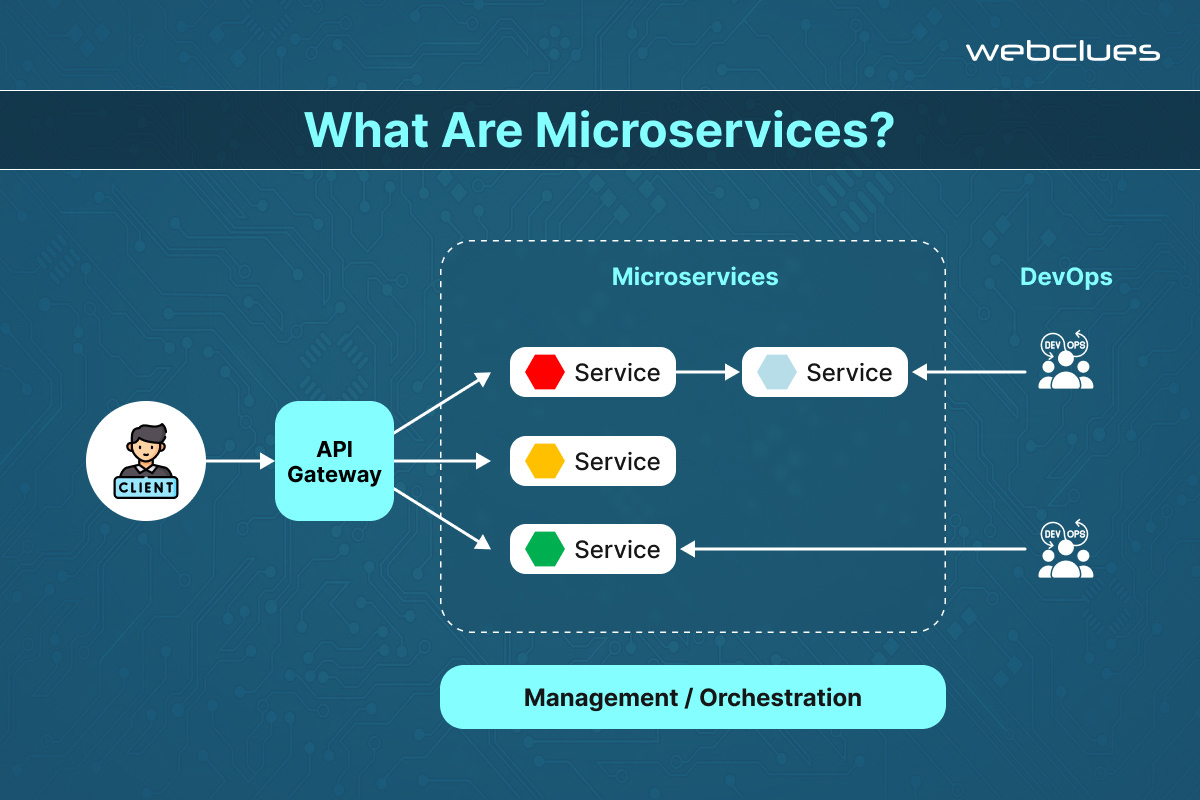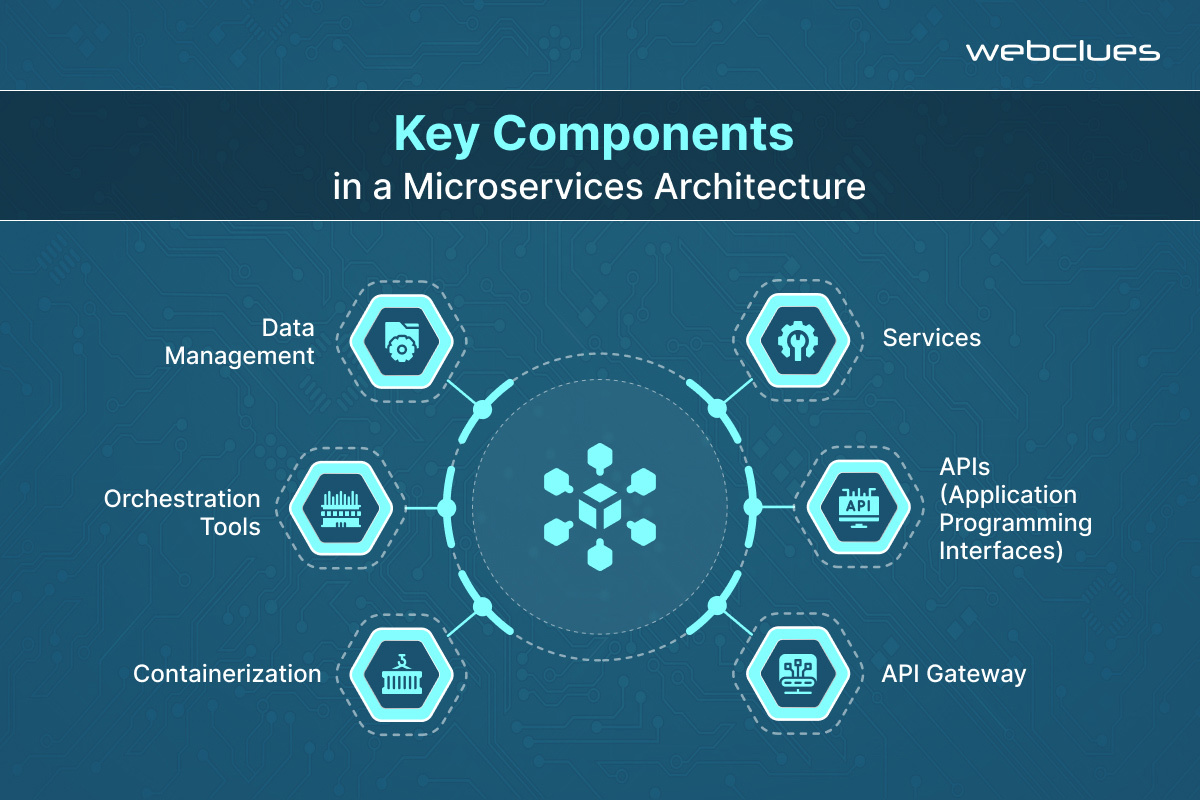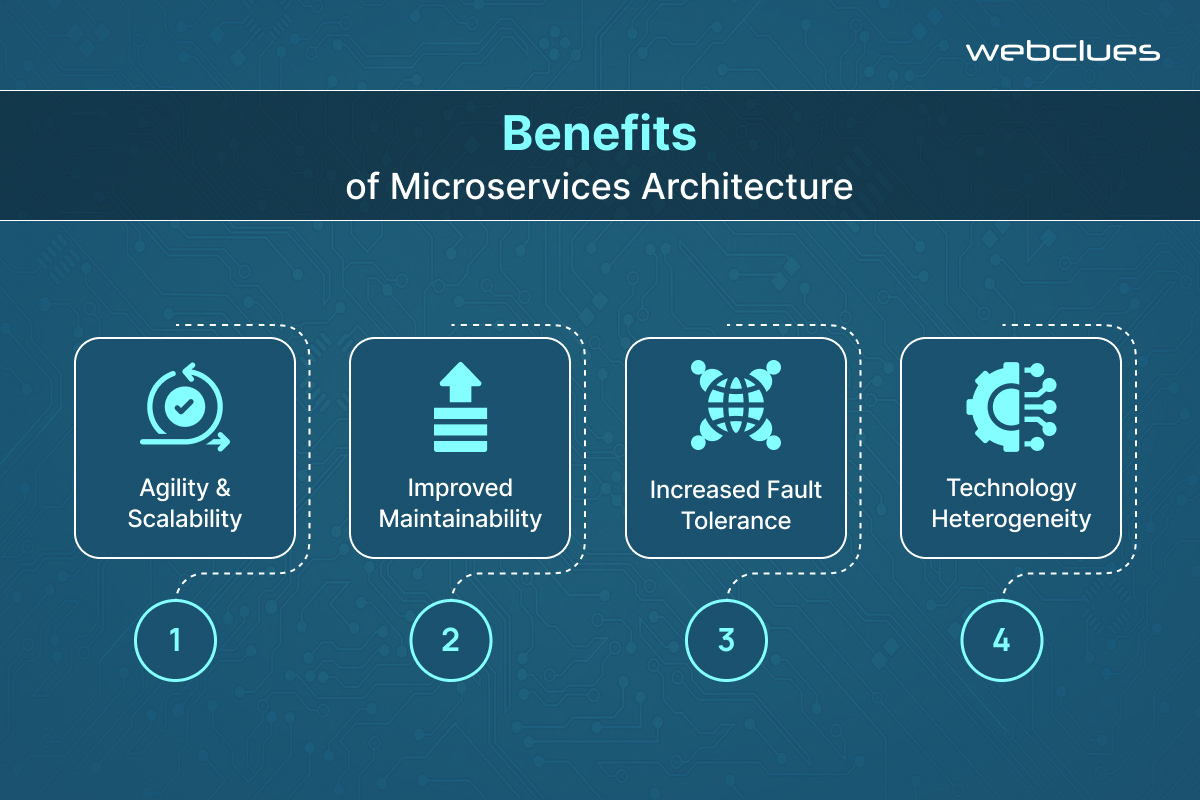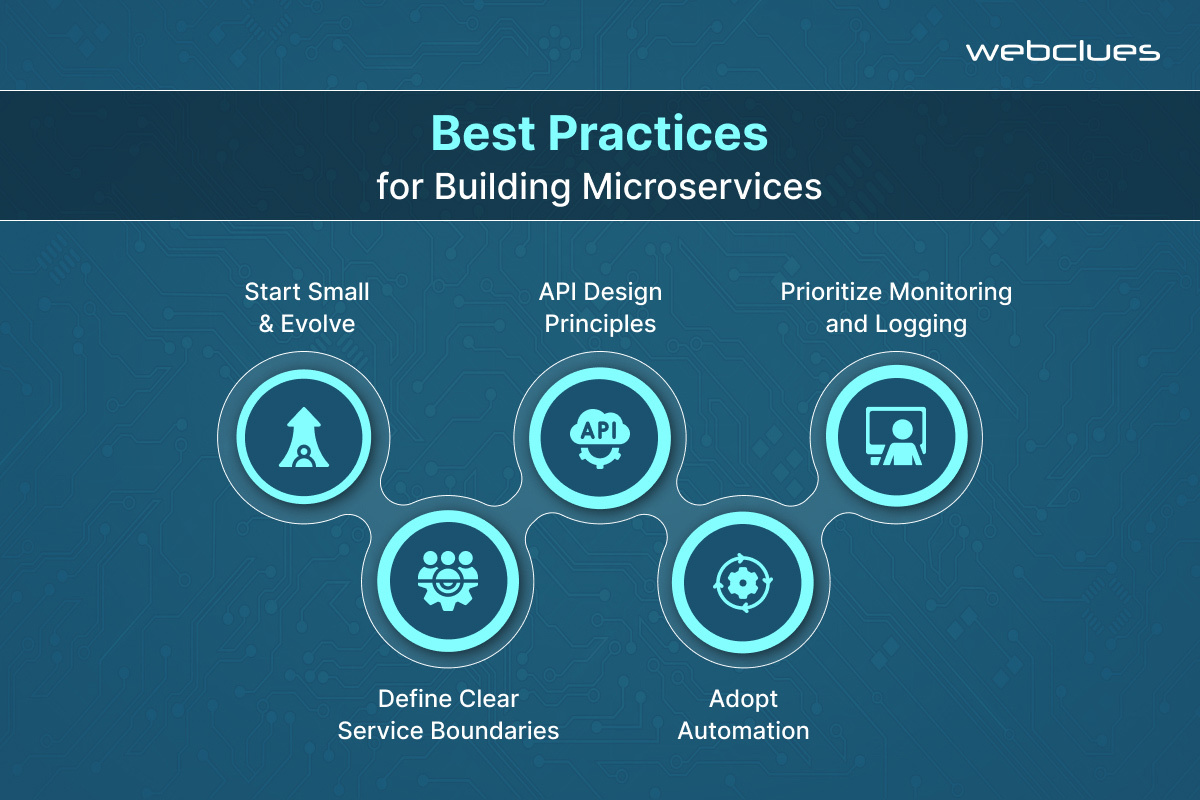A Comprehensive Guide to Microservices Architecture: Benefits, Challenges, and Best Practices

Remember the frustration of that recent online shopping spree disrupted by a website outage? For many popular e-commerce platforms, monolithic application architectures can become Achilles' heel. In these traditional structures, all functionalities are bundled into a single codebase. This makes scaling the application during peak traffic periods challenging, and a bug in one area can bring the entire system down. Scaling a monolithic application also becomes a challenge, as modifying one component often requires modifying the entire codebase, leading to lengthy development cycles and deployment delays.
Microservices architecture can remedy this. Microservices architectures decompose complex applications into smaller, independent services, each responsible for a specific business capability. They offer independent scaling for handling increases in demand, faster development cycles due to smaller codebases, and improved fault tolerance. Essentially, a malfunction in one service won’t break down the entire application.
This inclination toward microservices is driven by the growing adoption of cloud computing services and agile development methodologies. Cloud environments offer the perfect infrastructure for deploying and managing independent services while agile principles support faster iteration cycles. This perfectly aligns with the modularity of microservices.
What Are Microservices?
A microservice is an architectural style for building applications as a collection of small, independent services. Each service plays a specific role within the larger application, focusing on a single business capability. A well-designed microservice is defined by the following.
Independent Deployment: Unlike monolithic applications, microservices can be deployed, scaled, and updated independently. This allows developers to innovate and iterate on individual services without impacting the entire system.
Well-defined Boundaries: Clear boundaries are established for each service, specifying its functionality and how it interacts with other services. This promotes loose coupling, where changes in one service have minimal impact on others.
Business Capability Focus: Microservices are designed around business capabilities, aligning with the functionalities users need. This leads to a better understanding and maintainability of the codebase.
How Do Microservices Differ from Service-Oriented Architecture (SOA)?
Service-Oriented Architecture (SOA) is another established approach to building distributed systems. While both share similarities, microservices focus on lightweight communication protocols (like REST APIs) and a high degree of autonomy for each service. SOA, on the other hand, can involve more heavyweight technologies and potentially tighter coupling between services. This focus on lightweight communication and loose coupling allows microservices to be more agile and adaptable to changing needs.
Key Components in a Microservices Architecture
Microservices architectures rely on a well-defined ecosystem of components to function efficiently.
- Services
The heart of any microservices architecture lies in its services itself. Each service is a self-contained unit that performs a specific business function, making it modular and focused. For example, an e-commerce application might have distinct services for user authentication, product catalog management, order processing, and payment handling. By breaking down the application into smaller, independent services, organizations can develop, deploy, and scale each service independently. This modularity improves agility and allows teams to focus on their respective areas of expertise, leading to faster development cycles and more efficient applications.
- APIs (Application Programming Interfaces)
APIs are the communication channels between microservices, allowing them to interact effectively. They define how requests and responses are structured, allowing services to exchange data and perform coordinated operations. A common approach is to use RESTful APIs, which rely on standard HTTP methods such as GET, POST, PUT, and DELETE. For instance, a product catalog service might expose endpoints like ‘/products’ to retrieve a list of products and ‘/products/{id}’ to fetch details of a specific product. By adhering to consistent API design principles, services can communicate efficiently, facilitating interoperability and ease of integration.
- API Gateway
An API Gateway serves as the single entry point for managing and securing API traffic in a microservices architecture. It acts as an intermediary that processes incoming requests, routes them to the appropriate service, and handles concerns such as authentication, rate limiting, and load balancing. For example, when a user submits an order in an e-commerce application, the API Gateway might route the request to the order processing service, apply security checks, and manage traffic flow to maintain system stability. By centralizing these responsibilities, the API Gateway simplifies service interactions and improves security and performance.
- Containerization
Containerization technologies like Docker play a crucial role in packaging and deploying microservices. Containers encapsulate a service and its dependencies into a lightweight, portable unit that can run consistently across different environments. This isolation makes sure that a service behaves the same way on a developer's laptop as it does in production. Docker, for instance, allows teams to create images that define the service's runtime environment, including the operating system, application code, and required libraries. Containers facilitate rapid deployment, reduce environment-specific bugs, and simplify scaling by allowing services to be replicated across multiple nodes.
- Orchestration Tools
Managing a large number of containers requires sophisticated orchestration tools like Kubernetes. Kubernetes automates the deployment, scaling, and management of containerized applications. It provides features such as automatic load balancing, self-healing, and rolling updates so that services remain available and performant. For example, Kubernetes can automatically restart a service if it fails, distribute traffic evenly across service instances, and roll out updates with minimal downtime. By abstracting the complexity of container management, orchestration tools allow organizations to maintain highly available and resilient microservices architectures.
- Data Management
Data management in a microservices environment presents unique challenges, as each service typically manages its own data store. This decentralized approach requires strategies such as eventual consistency and data partitioning. Eventual consistency makes sure that all replicas of a piece of data converge to the same value over time, which is suitable for systems where immediate consistency is not critical. For example, a user profile service and an order history service might operate independently but synchronize periodically to reflect changes. Data partitioning, or sharding, involves dividing a dataset into smaller, manageable segments, allowing services to handle data more efficiently. By adopting these strategies, microservices can achieve scalable and resilient data management customized to their specific needs.
Benefits of Microservices Architecture
The microservices approach offers a myriad of benefits for both developers and businesses.
- Agility and Scalability
Microservices break down complex applications into smaller, independent units. This allows development teams to work on individual functionalities in parallel, accelerating development cycles and time-to-market. Consider an example of an eCommerce platform that utilizes a microservice for product recommendations. If a need is identified to improve the recommendation algorithm, the development team can focus solely on that service without affecting other functionalities like the shopping cart or checkout process. Furthermore, scaling individual services becomes much easier. If the product recommendation service experiences a surge in traffic during peak shopping seasons, that specific service's resources (CPU, memory) can be scaled up independently, without impacting the core functionalities of the platform. This granular control over scaling leads to a more efficient and cost-effective approach to handling varying workloads.
- Improved Maintainability
The codebase of traditional monolithic applications can become difficult to understand, debug, and maintain. Microservices, with their well-defined boundaries and smaller codebases, offer a notable improvement. The modular approach allows developers to focus on a specific service's functionality without getting intertwined in the intricacies of the entire application. Furthermore, smaller codebases facilitate easier onboarding of new team members, as they can quickly grasp the functionalities of individual services. This not only improves development efficiency but also reduces long-term maintenance costs.
- Increased Fault Tolerance
One of the most prominent characteristics of microservices is their inherent resilience. Since services are loosely coupled and operate independently, a failure in one service has minimal impact on others. This isolation makes sure that the entire application doesn’t break down due to a single point of failure. For instance, if your e-commerce platform encounters an issue with the user authentication service, users might be temporarily unable to log in. However, other functionalities like browsing product listings or viewing shopping carts would remain operational, minimizing disruption for the overall user experience.
- Technology Heterogeneity
Microservices free developers from the constraints of a single technology stack. Each service can be built using the programming language and framework best suited for its specific needs. This flexibility allows developers to tap into the strengths of different technologies. For example, a service handling real-time chat functionality might benefit from a language like Go due to its concurrency features, while a service managing product data might be well-served by a language like Java with its rich data structures and libraries. This freedom of choice helps developers create high-performing and efficient services.
Challenges of Implementing Microservices
Despite the multitude of benefits, implementing microservices presents a unique set of challenges that require careful consideration.
- Increased Complexity
The distributed nature of microservices introduces a layer of complexity compared to monolithic applications. Distributed tracing, the process of tracking requests across multiple services, becomes crucial for debugging issues.
Traditional debugging techniques might not translate well to a microservices environment, requiring specialized tools to pinpoint the root cause of problems. Furthermore, managing dependencies between services and ensuring their smooth interaction adds another layer of complexity.
- Testing Challenges
Testing in a microservices environment requires a more comprehensive approach. Individual services need thorough unit and integration testing to keep them functional. However, equally important is comprehensive testing of how services interact with each other. Contract testing tools can help validate that services adhere to agreed-upon communication protocols (APIs). Shifting left, a testing philosophy that focuses on early and frequent testing throughout the development lifecycle becomes even more critical in a microservices environment.
- Monitoring and Observability
Maintaining visibility into the health and performance of a microservices ecosystem is essential. Traditional monitoring tools designed for monolithic applications might not suffice. Strong monitoring solutions capable of gathering metrics from individual services, tracking API calls, and identifying potential bottlenecks become crucial. Moreover, distributed logging solutions that aggregate logs from various services and correlate them with specific requests are vital for troubleshooting issues.
- Inter-service Communication Overhead
Frequent communication between services can lead to increased network traffic compared to monolithic applications. Careful consideration needs to be given to API design principles to minimize the number of calls required for a specific task. Additionally, utilizing asynchronous communication patterns, where a service doesn't wait for a response from another before proceeding, can help optimize communication overhead.
- Organizational Restructuring
The microservices approach often requires organizational changes. Traditional monolithic development structures might not be well-suited for managing independent services. Teams need to be restructured around service ownership, with developers responsible for the entire lifecycle of a service (development, deployment, maintenance). This shift requires a culture change, encouraging collaboration and communication across teams to offer smooth service integration and application functionality.
- Is Microservices Right for You?
Microservices aren't a one-size-fits-all solution. Carefully evaluate your project requirements before adopting microservices. Consider factors like project size and complexity. For smaller, well-defined applications, a monolithic approach might be sufficient. However, for larger, complex applications with evolving business needs, microservices offer significant agility and scalability benefits. Furthermore, consider your team structure. If your team lacks experience with distributed systems and DevOps practices, adopting microservices might require additional training and cultural shifts within the organization. Consider taking the help of cloud consulting services for the best implementation.
Best Practices for Building Microservices
To reap the benefits of the modular architectural style of microservices, it’s crucial to establish a well-defined strategy and adhere to best practices throughout the development lifecycle. Here are some key recommendations.
- Start Small and Evolve
A monolithic to microservices migration can be challenging. Consider a staged approach, identifying core business functionalities that would benefit most from the independence and agility of microservices. Begin by decomposing these functionalities into well-defined services, and gradually expand your microservices ecosystem as you gain experience and confidence. This incremental approach allows you to reduce risks and demonstrate the value of microservices within your organization.
Define Clear Service Boundaries
The foundation of a strong microservices architecture lies in well-defined service boundaries. Focus on business capabilities when identifying service boundaries. Each service should comprise a distinct functionality that aligns with a specific business domain (e.g., user management, order processing, product catalog). Strive for loose coupling between services, minimizing dependencies and making sure that changes in one service have minimal impact on others. Utilize tools like domain-driven design (DDD) to guide the process of identifying and defining service boundaries based on business concepts.
- API Design Principles
Effective communication between services depends on well-designed APIs. RESTful APIs, a popular choice in microservices, utilize HTTP verbs and standardized data formats (JSON) to facilitate communication. Clearly document your APIs, specifying endpoints, request parameters, response formats, and error codes. Consider using tools like Swagger to generate API documentation, making it easier for developers to consume your services. Versioning your APIs allows for future modifications while facilitating backward compatibility with existing consumers.
- Adopt Automation
Optimize your microservices development lifecycle by utilizing automation tools. Utilize continuous integration (CI) and continuous delivery (CD) pipelines to automate building, testing, and deploying your services. Containerization technologies like Docker, combined with orchestration tools like Kubernetes, further automate the deployment, scaling, and management of containerized microservices. Automation reduces manual effort as well as promotes consistency and reliability in your development process.
- Prioritize Monitoring and Logging
Proactive monitoring and logging are essential for maintaining the health and performance of your microservices ecosystem. Implement efficient monitoring solutions that capture metrics from individual services, API calls, and infrastructure components. Utilize tools that provide real-time dashboards and alerts for anomalies or potential performance bottlenecks. Distributed logging solutions that aggregate logs from various services and correlate them with specific requests are invaluable for troubleshooting issues across the system. By proactively monitoring and logging, you can identify and address potential problems before they significantly impact your users.
Wrapping It Up
The microservices architectural style has transformed how we build complex applications. Its focus on modularity, scalability, and agility allows businesses to keep pace with the evolving market demands.
Furthermore, emerging trends like serverless computing and service meshes are further simplifying the development and deployment of microservices. Serverless computing allows developers to focus solely on writing code for functionalities, while cloud service providers handle the underlying infrastructure and scaling. Service meshes provide an infrastructure layer for managing communication between services, including service discovery, load balancing, and security. These advancements are making microservices even more accessible and attractive for building scalable and resilient applications.
Looking to adopt microservices for your next project? Our team of experienced developers at Webclues Infotech can help you with the transition and tap into the agility and scalability benefits of this architectural style. Feel free to reach out to us for a consultation to discuss your unique needs.
Build Your Agile Team
Hire Skilled Developer From Us
Tap into the agility and scalability of microservices for your next project
Microservices architecture offers you the benefits of modularity and scalability. WebClues Infotech can help you build modern, agile applications with a microservices approach. Contact us today for collaboration!
Connect Now!Our Recent Blogs
Sharing knowledge helps us grow, stay motivated and stay on-track with frontier technological and design concepts. Developers and business innovators, customers and employees - our events are all about you.
Contact
Information
Whether you're building next door or across time zones, we stay close in ideas, in execution, and in support.
India

Ahmedabad
1007-1010, Signature-1,
S.G.Highway, Makarba,
Ahmedabad, Gujarat - 380051
Rajkot
1308 - The Spire, 150 Feet Ring Rd,
Manharpura 1, Madhapar, Rajkot, Gujarat - 360007
UAE
Dubai
Dubai Silicon Oasis, DDP,
Building A1, Dubai, UAE
USA
Atlanta
6851 Roswell Rd 2nd Floor, Atlanta, GA, USA 30328
New Jersey
513 Baldwin Ave, Jersey City,
NJ 07306, USA
California
4701 Patrick Henry Dr. Building
26 Santa Clara, California 95054
Australia
Queensland
120 Highgate Street, Coopers Plains, Brisbane, Queensland 4108
UK
London
85 Great Portland Street, First
Floor, London, W1W 7LT
Canada
Burlington
5096 South Service Rd,
ON Burlington, L7l 4X4
Let’s Transform Your Idea into Reality. Get in Touch





